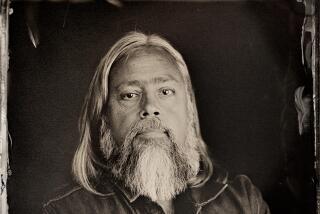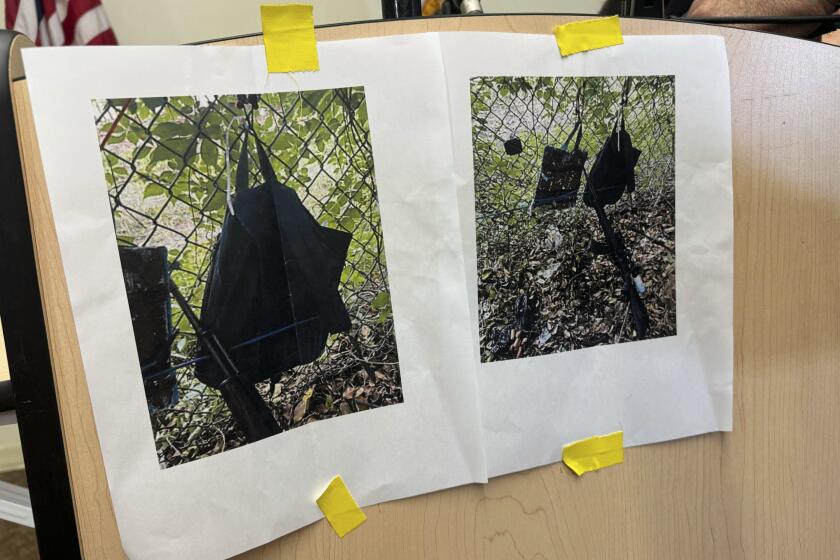Curiosity set sail with Columbus
The day in 1492 when Columbus ran into a cluster of islands blocking his way to India is celebrated throughout Latin America and in Spain. It is now fixed in the United States as the second Monday in October, and Americans too have long commemorated the event, both embracing and vilifying the explorer.
Irish and Italian immigrants proudly pointed to Columbus’ Roman Catholic religion to fight the prejudice they experienced in their adopted country, and in 1882, they founded the Knights of Columbus, now the world’s largest Catholic service organization. But during the late 20th century, Native Americans bristled at the notion of Columbus’ “discovery,” feeling that their ancestral lands didn’t need discovering.
But the real reason Columbus’ voyages should be remembered — and celebrated — is for their central role in prying loose European curiosity from the vise put in place by the medieval church.
It took something as dramatic as finding new lands filled with exotic people, plants and animals to liberate Europe’s investigative spirit from official opprobrium. Over the two centuries that followed Columbus’ initial voyage, robust questioning about the nature of the world turned an inward society outward, fueling an inquisitiveness that would eventually carry Europeans around the world.
By carrying flora and fauna from the New World to the Old, and the Old to the New, Columbus began during his several voyages what scholar Alfred Crosby has called the Columbian Exchange.
Columbus, Amerigo Vespucci, Hernan Cortez and a score of others wrote about their explorations, and a succession of prominent publishers circulated these firsthand accounts of the New World just as printed books were getting cheap enough for many people to own.
A new passion for collecting sped up the Columbian Exchange. Kings, nobles and wealthy merchants searched the globe for objects to embellish their cabinets of curiosity. Travelers arranged their itineraries around visits to famous European collections, where they could see wondrous displays of butterflies, fossils, Indian headdresses and toucan beaks.
Though slower to find a receptive audience, New World edibles also stoked curiosity. The pineapple, which had to be dried to survive the trip across the Atlantic, quickly became a symbol of luxury and hospitality. Beans, potatoes, corn, chilies, avocados, cocoa, tomatoes, papayas and peanuts were incorporated into the European diet, as were the spices the Portuguese began bringing back from Southeast Asia.
Tragically, the exchange included European germs, which triggered an unintentional holocaust when the newcomers’ diseases felled millions of the indigenous peoples.
The discovery of the New World upended the entire intellectual tradition of its discoverers. Aristotle had insisted that the equator was too hot to support life. Others had predicted that sea monsters would swallow any vessels attempting to cross the Atlantic. More troubling, no llamas, pumas or bison had boarded Noah’s Ark. These challenges to Christian orthodoxy had to be answered, entangling church officials and their critics in two centuries of disputes.
A more intellectually driven kind of collecting followed the curiosity cabinets as those who became known as naturalists organized botanical gardens and zoos to examine nature’s variety more carefully. Medicinal gardens expanded to include new species, and amateur botanists scoured the countryside for plant life to study. The unfamiliar vegetation and animals from the Western Hemisphere made the familiar more interesting.
Bringing natural objects together invited comparisons. Was the llama a camel, the cougar a lion? It looked like one, but why did it purr like a cat instead of roar like a lion? As Europeans began to compare New World flora and fauna with their look-alikes at home, they devised categories to assist in determining the key distinctions, which then invited more questions.
In a predictable pattern, curiosity led to speculation and speculation to testable hypotheses, which in turn upended long-held assumptions and beliefs. Spontaneous generation, for example, was a widely accepted explanation for the way in which maggots seemed to suddenly appear on rotting meat. The Italian physician Francesco Redi had a hunch they came from eggs laid by flies, and he conducted an experiment with spoiled meat to prove it.
The scattered experiments of naturalists like Redi found a theorist and propagandist in Francis Bacon, an early 17th century English jurist. Taking aim at Aristotle, who still exercised a powerful influence, Bacon explained with great clarity the difference between deducing truths from principles and building up facts from careful observation and repeated experiments.
For Bacon, the new empiricism held out hope of reforming manners as well as perceptions. Careful observation of nature would lead to the establishment of facts, a narrow legal term pressed into service to denote discrete bits of information. Building a structure of facts was not like the arid arguments arising from differences of opinion, Bacon said. If you opined that frozen objects could be melted by the sound of lively music, you could learn from observation that this was not true.
Bacon predicted that the cumulative growth of knowledge would permit his contemporaries to throw off the idea that their world had degenerated from a golden era, an idea that both classical and Christian traditions embraced.
In the 17th century, people remembered what had stimulated the dramatic changes in their thinking. “Distant voyages and travels have brought to light many things in nature,” Bacon reflected, “which may throw fresh light on human philosophy and science and correct by experience the opinions and conjectures of the ancients.” After studying natural phenomena became a dominant cultural trait, Europeans forgot that questioning eyes had once been verboten. Columbus’ voyages unchained curiosity, and that should be celebrated.
Joyce Appleby is an emeritus professor of history at UCLA and the author of “Shores of Knowledge: New World Discoveries and the Scientific Imagination.”
More to Read
A cure for the common opinion
Get thought-provoking perspectives with our weekly newsletter.
You may occasionally receive promotional content from the Los Angeles Times.










